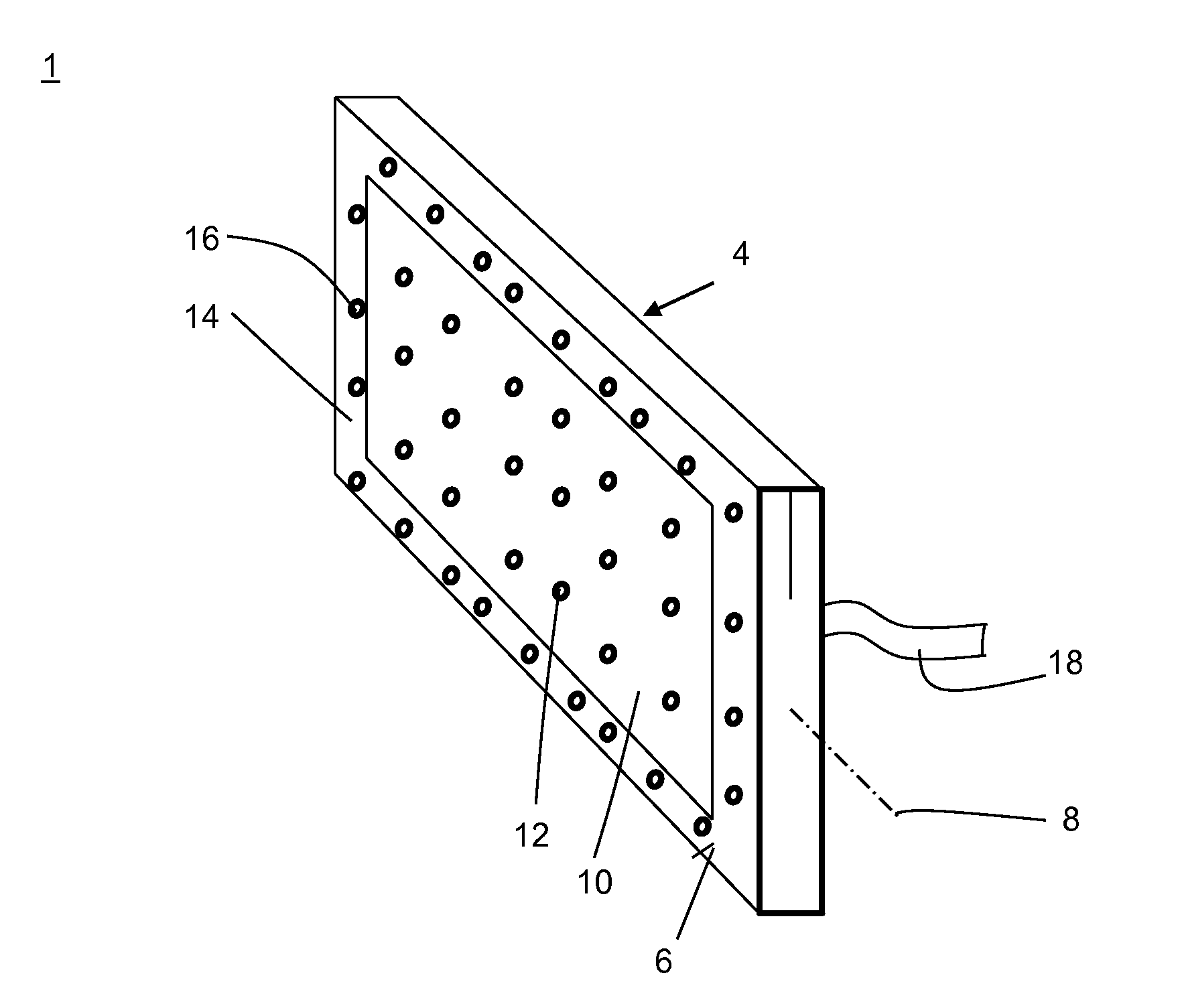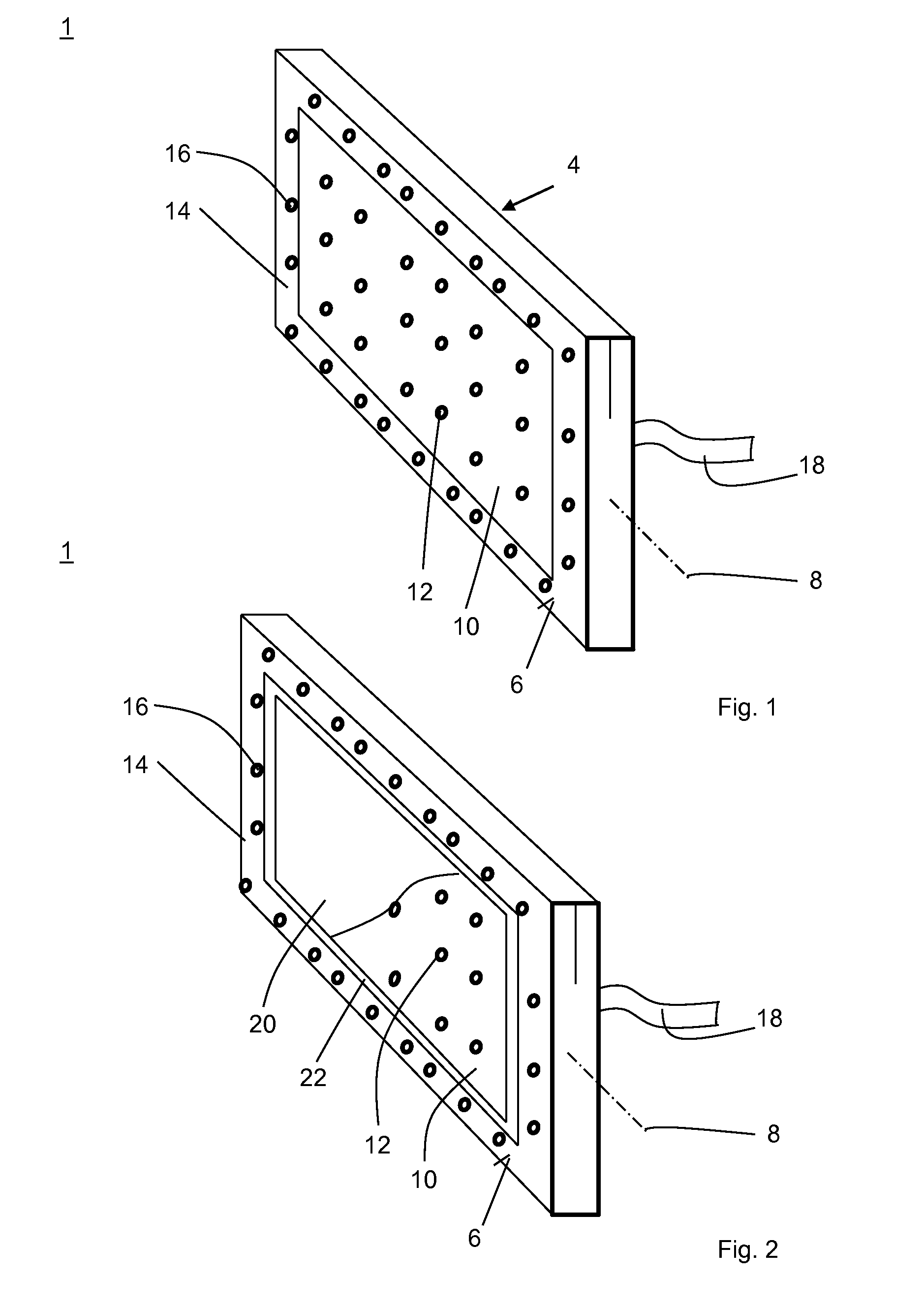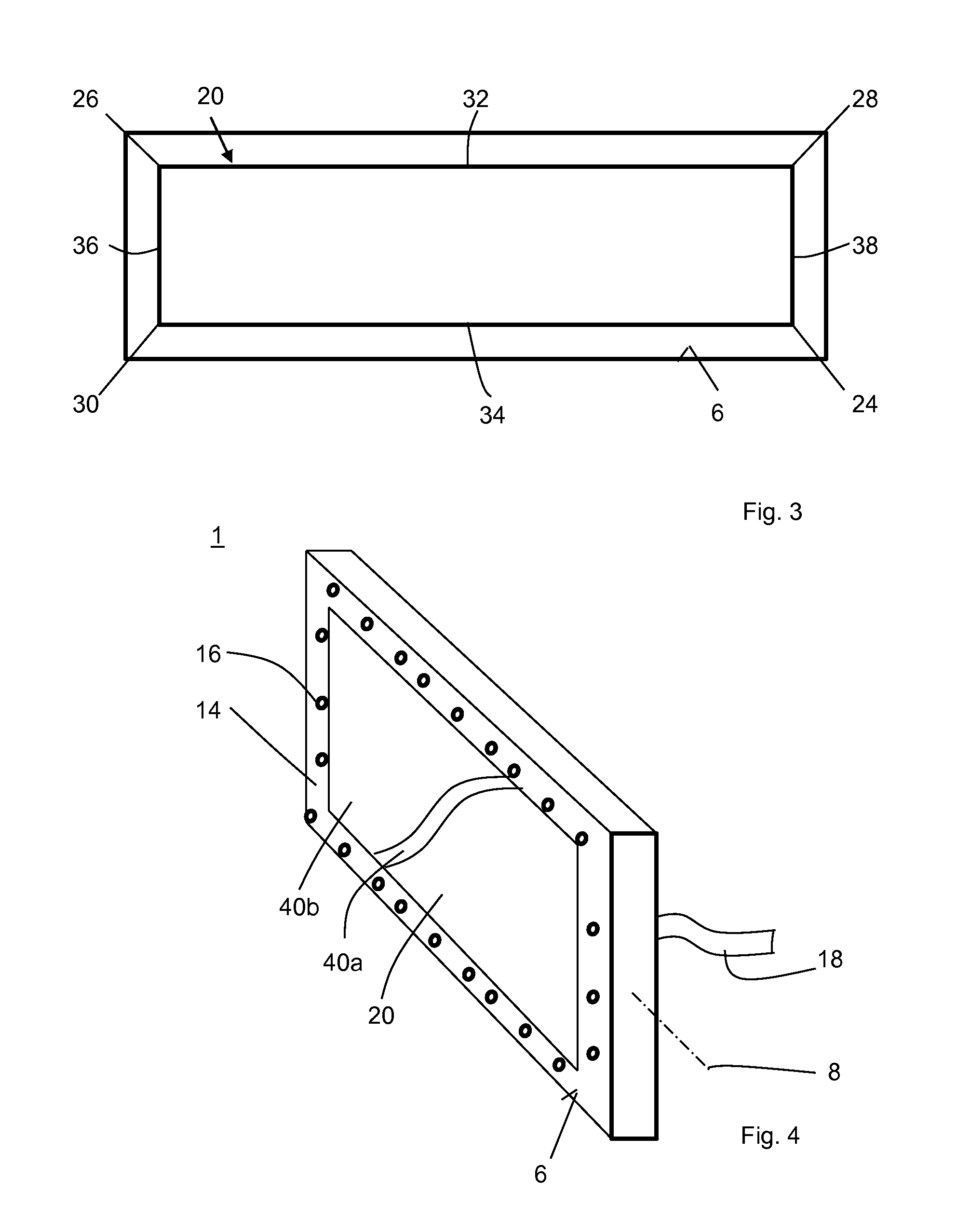Method and a placement tool for the manufacture of a non-crimp fabric
a technology of placement tool and non-crimp fabric, which is applied in the manufacture of butter, cheese, domestic applications, etc., can solve the problems of reducing placement performance and reducing the difficulty of separation of fibre mats from tool surfaces, so as to achieve no effect, greatly reduce effects, and improve placement performan
- Summary
- Abstract
- Description
- Claims
- Application Information
AI Technical Summary
Benefits of technology
Problems solved by technology
Method used
Image
Examples
Embodiment Construction
[0018]In what follows the same design elements bear the same reference numbers, wherein in the event of a plurality of the same design elements in one figure, only some of the elements are provided with a reference number, in the interests of clarity.
[0019]FIG. 1 shows an inventive placement tool 1 for the manufacture of a fibre mat or laminate 2 (see FIG. 7). The fibre mat 2 forms, for example, the skin of an approximately 16 m long shell element of an aircraft fuselage, which is composed of four shell elements, which are connected with one another on their longitudinal sides.
[0020]The placement tool 1 has an approximately rectangular body 4 with a vertically orientated tool surface 6, and can be pivoted about its longitudinal axis 8. The tool surface 6 is designed as a close match to the contour of the inner circumference of the aircraft fuselage and is appropriately curved in a concave manner (not shown) along the longitudinal axis 8. It has an inner hole array 10 with a multipli...
PUM
| Property | Measurement | Unit |
|---|---|---|
| vacuum | aaaaa | aaaaa |
| adhesion | aaaaa | aaaaa |
| speed | aaaaa | aaaaa |
Abstract
Description
Claims
Application Information
 Login to View More
Login to View More - R&D
- Intellectual Property
- Life Sciences
- Materials
- Tech Scout
- Unparalleled Data Quality
- Higher Quality Content
- 60% Fewer Hallucinations
Browse by: Latest US Patents, China's latest patents, Technical Efficacy Thesaurus, Application Domain, Technology Topic, Popular Technical Reports.
© 2025 PatSnap. All rights reserved.Legal|Privacy policy|Modern Slavery Act Transparency Statement|Sitemap|About US| Contact US: help@patsnap.com



